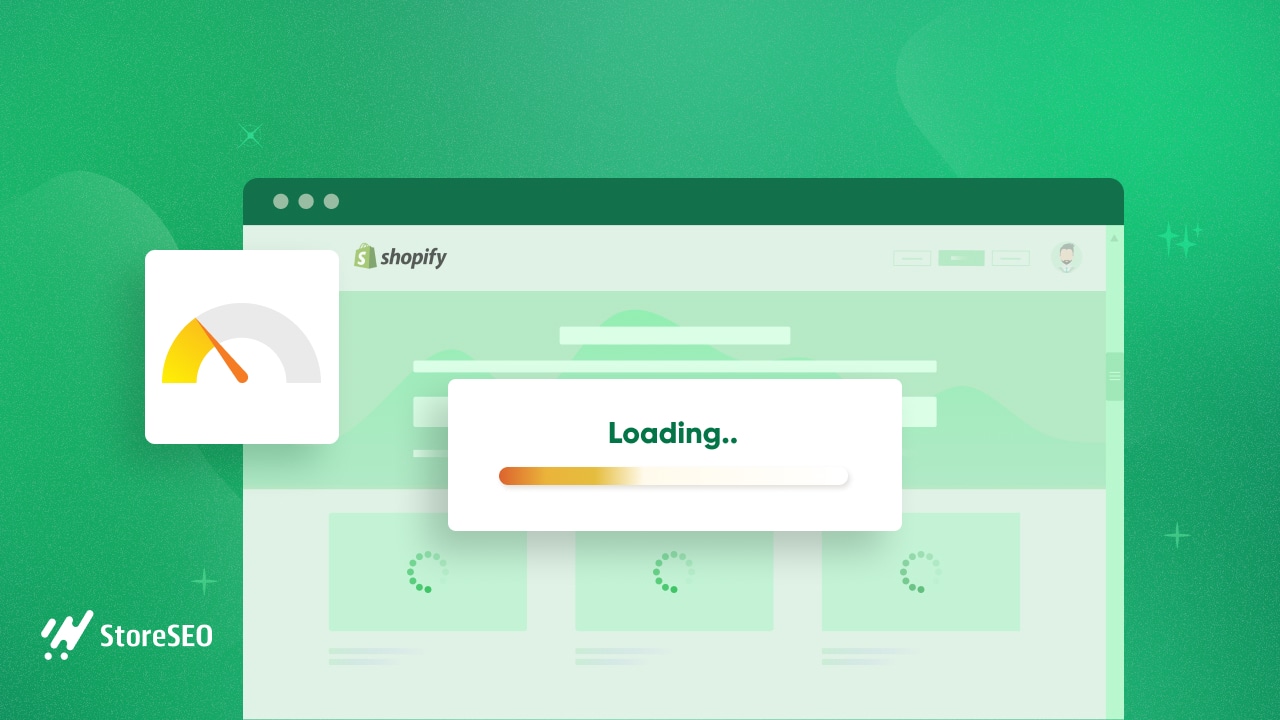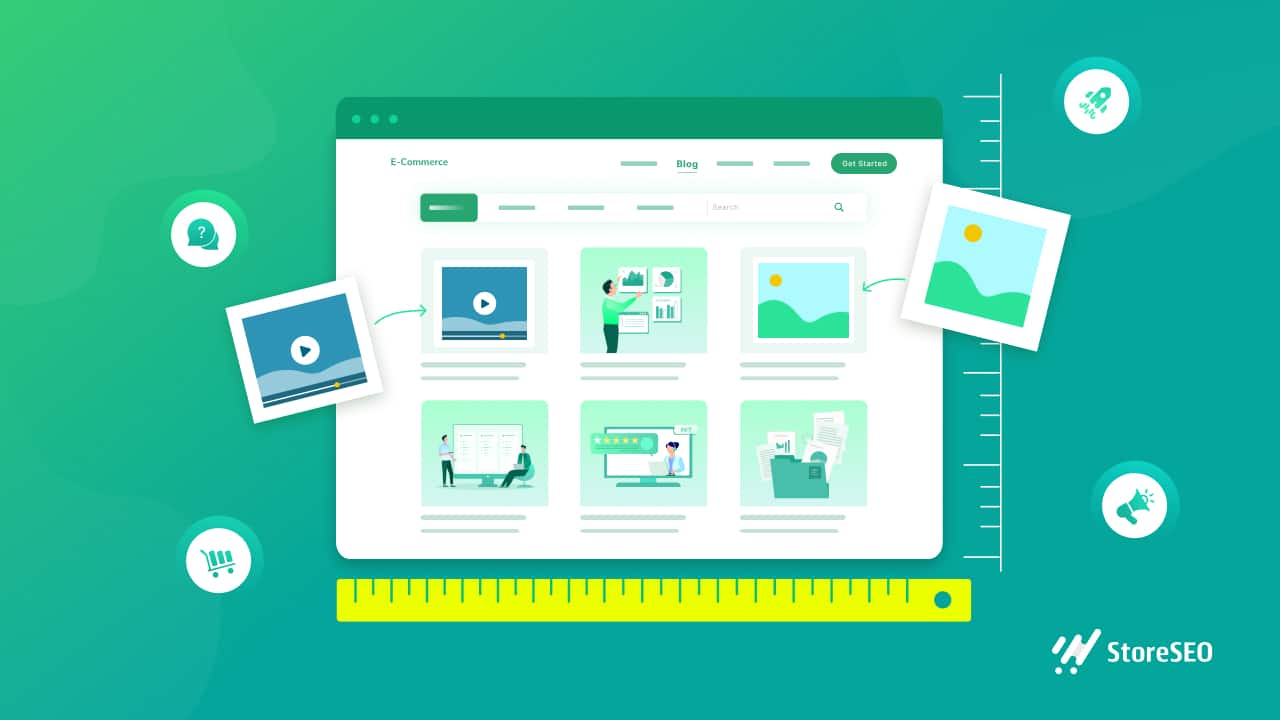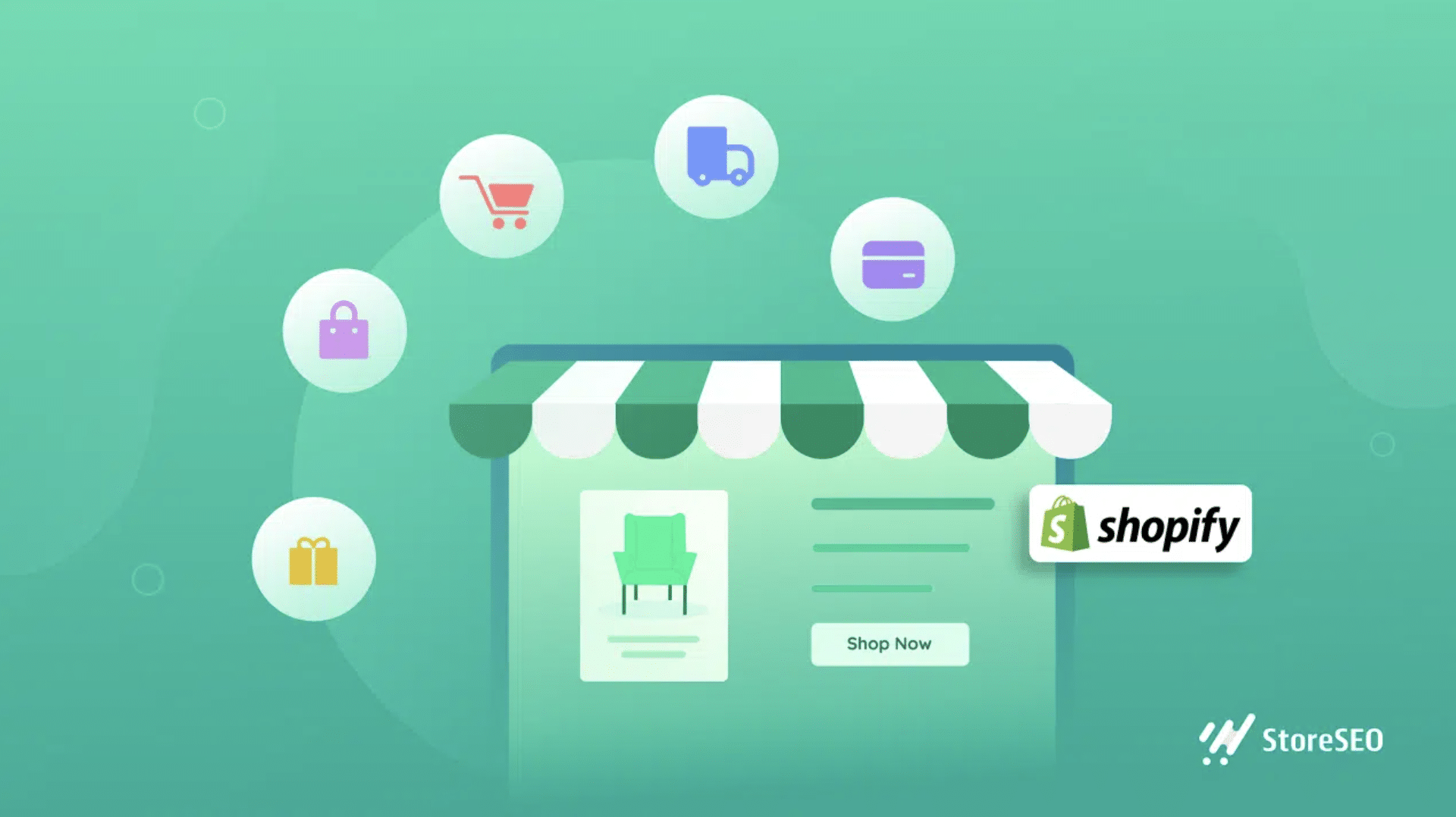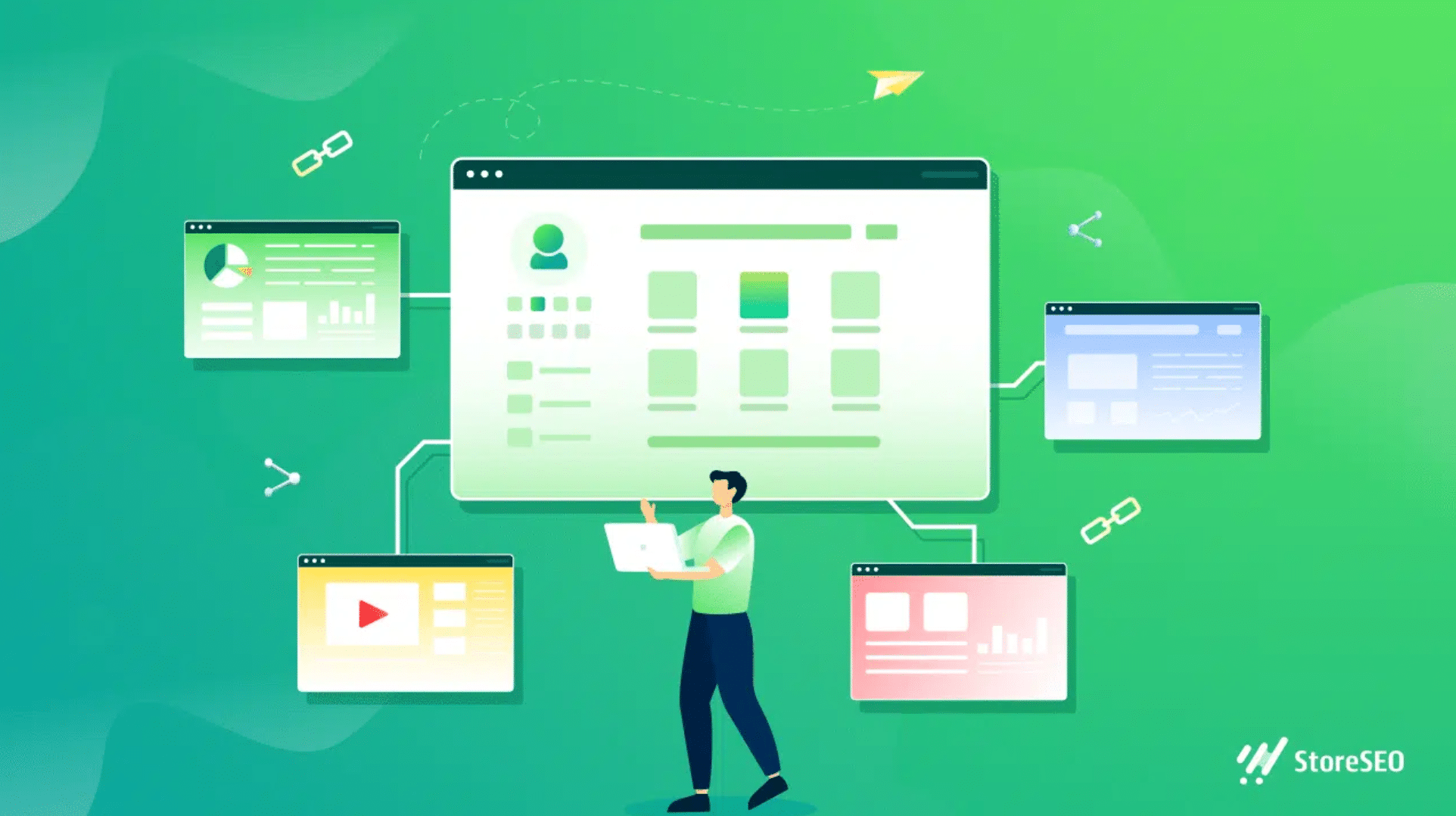आपके Shopify स्टोर की गति आपके व्यवसाय की सफलता को बना या बिगाड़ सकती है। धीमी गति से लोड होने वाली वेबसाइट विज़िटर को निराश कर सकती है और उच्च बाउंस दरों को जन्म दे सकती है। यदि आपने सुस्त प्रदर्शन देखा है, तो मूल कारणों की पहचान करना और उनका समाधान करना महत्वपूर्ण है। इस ब्लॉग में, आप जानेंगे 5 कारण क्यों आपका Shopify स्टोर इतना धीमा है और आपकी साइट की गति और प्रदर्शन को पुनर्जीवित करने के लिए कार्रवाई योग्य जानकारी प्रदान करें।

आप कैसे जानें कि आपका Shopify स्टोर धीमा है?
इस प्रकार के संकेतकों पर ध्यान दें धीमी गति से पेज लोड होना, उच्च बाउंस दरें, और क्लाइंट की शिकायतों पर नज़र रखें यदि आप जानते हैं कि आपकी Shopify साइट धीरे चल रही है। फिर आपको उपयोगकर्ता समीक्षाओं को ट्रैक करना चाहिए, रूपांतरण दरों की जांच करनी चाहिए, और यह आकलन करना चाहिए कि आपका स्टोर विभिन्न उपकरणों पर कितना अच्छा काम करता है। आपको अपनी दुकान की गति, साथ ही सर्वर प्रतिक्रिया समय पर इंस्टॉल किए गए एप्लिकेशन और थीम के प्रभाव का भी मूल्यांकन करना चाहिए। समग्र प्रदर्शन को बेहतर बनाने के लिए, छवियों को अनुकूलित करने, अपनी होस्टिंग योजना को अपडेट करने और अपनी थीम और ऐप्स के साथ समस्याओं को ठीक करने के बारे में सोचें।
इसके अतिरिक्त, आप अपने स्टोर के प्रदर्शन का मूल्यांकन करने के लिए एडमिन पैनल में Google पेज स्पीड इनसाइट्स और Shopify की बिल्ट-इन स्पीड रिपोर्ट जैसे इंटरनेट संसाधनों का उपयोग कर सकते हैं। इसके अलावा, आप सबसे अच्छे Shopify SEO ऐप का उपयोग करके अपनी वेबसाइट के प्रदर्शन का आसानी से पता लगा सकते हैं और उसे नियंत्रित कर सकते हैं। स्टोरएसईओ, आपके ईकॉमर्स स्टोर के लिए एक उन्नत एसईओ समाधान।
Shopify स्टोर के लिए साइट की गति क्यों मायने रखती है?
वेबसाइट की गति Shopify स्टोर की सफलता के लिए अभिन्न अंग है। यह न केवल प्रभावित करता है खोज इंजन रैंकिंग लेकिन यह उपयोगकर्ता अनुभव, रूपांतरण दरों और आपके ब्रांड की समग्र धारणा में भी महत्वपूर्ण भूमिका निभाता है। यदि आप अपने Shopify स्टोर को गति के लिए अनुकूलित करते हैं तो इससे बेहतर दृश्यता, बढ़ी हुई बिक्री और अधिक सकारात्मक ऑनलाइन उपस्थिति हो सकती है। अब कई कारणों की जाँच करें कि Shopify साइट की गति क्यों मायने रखती है:
बेहतर रैंकिंग

सर्च इंजन, खास तौर पर Google के लिए पेज स्पीड को रैंकिंग फैक्टर के तौर पर माना जाता है और तेजी से लोड होने वाली वेबसाइट अक्सर सर्च इंजन रिजल्ट पेज (SERPs) में उच्च रैंक पर होती हैं। Google का लक्ष्य उपयोगकर्ताओं को सर्वोत्तम संभव अनुभव प्रदान करना है और तेजी से लोड होने वाले पेज सकारात्मक उपयोगकर्ता अनुभव में योगदान करते हैं। बेहतर रैंकिंग से आपके Shopify स्टोर पर दृश्यता और अधिक ऑर्गेनिक ट्रैफ़िक बढ़ सकता है।
रूपांतरण दर में वृद्धि
आपके Shopify स्टोर की गति सीधे उपयोगकर्ता अनुभव को प्रभावित करती है। धीमी गति से लोड होने वाले पेज विज़िटर को निराश कर सकते हैं और बाउंस दरों को बढ़ा सकते हैं, लेकिन तेज़ी से लोड होने वाले पेज एक सहज और अधिक सुखद खरीदारी अनुभव में योगदान करते हैं।
बाउंस दरों में कमी
बाउंस दर से तात्पर्य उन विज़िटर के प्रतिशत से है जो केवल एक पेज देखने के बाद वेबसाइट से दूर चले जाते हैं। धीमी गति से लोड होने वाले पेज उच्च बाउंस दरों में योगदान करते हैं, क्योंकि अगर लोड होने में बहुत अधिक समय लगता है तो उपयोगकर्ता साइट छोड़ने की अधिक संभावना रखते हैं। इसलिए अपनी Shopify साइट की गति को अनुकूलित करना, आप बाउंस दरों को कम कर सकते हैं और आगंतुकों को व्यस्त रख सकते हैं। यह आपके ग्राहकों को आपके उत्पादों की खोज करने और खरीदारी करने की संभावनाओं को बढ़ाने में भी आपकी मदद करेगा।
अधिक अधिकार
एक तेज़-लोडिंग वेबसाइट आपके ब्रांड की सकारात्मक धारणा में योगदान देती है। उपयोगकर्ता गति को व्यावसायिकता और विश्वसनीयता से जोड़ते हैं। एक धीमी वेबसाइट अव्यवसायिकता का आभास दे सकती है और विश्वास को खत्म कर सकती है। दूसरी ओर, एक तेज़ और उत्तरदायी Shopify स्टोर आपके ब्रांड की विश्वसनीयता, अधिकार और भरोसेमंदता को बढ़ाता है। ग्राहकों को प्राप्त करने और बनाए रखने के लिए यह महत्वपूर्ण कारकों में से एक है।
5 कारण क्यों आपका Shopify स्टोर इतना धीमा है

इस अनुभाग में, आप मंदी के पीछे के पाँच मुख्य कारणों का पता लगा सकते हैं और सीख सकते हैं कि इन मुद्दों को कैसे संबोधित किया जाए। इससे आपको अपनी वेबसाइट को तेज़ बनाने और अधिक कुशल बनाने में मदद मिल सकती है Shopify पर ऑनलाइन शॉपिंग का अनुभवनीचे सभी विवरण देखें:
बहुत अधिक ऐप्स का उपयोग
अगर आप बहुत सारे ऐप मैनेज कर रहे हैं या आपके पास अप्रयुक्त ऐप इंस्टॉल हैं, तो उस स्थिति में, आपको अपनी वेबसाइट से सभी अनावश्यक ऐप हटाने होंगे और अपने ईकॉमर्स स्टोर की लोडिंग सुनिश्चित करनी होगी। ऐसा इसलिए है क्योंकि अत्यधिक ऐप या अप्रयुक्त ऐप आपके ब्राउज़र को लोड होने में अधिक समय लेते हैं और आपकी साइट को धीमा कर देते हैं। क्योंकि प्रत्येक ऐप आपकी वेबसाइट पर कोड जोड़ता है, जिससे आपके स्टोर का लोडिंग समय प्रभावित होता है।
खराब छवि अनुकूलन
छवियाँ और वीडियो वेबसाइट पर एक निश्चित स्थान लेते हैं। इसलिए यदि आपने उपयोग किया है या अत्यधिक उपयोग की गई छवियाँ, वीडियो, या कस्टम फ़ॉन्ट जो आपके पेज लोड को धीमा कर देते हैं, यही कारण है कि आपको अपनी फ़ाइल का आकार और रिज़ॉल्यूशन जांचना होगा। क्योंकि बहुत सारी बड़ी छवि फ़ाइलें, एम्बेडेड वीडियो आपके ई-कॉमर्स स्टोर को धीमा कर सकते हैं।
अकुशल लिक्विड कोड
Shopify उपयोग 'तरल' इसकी टेम्प्लेटिंग भाषा के रूप में। लिक्विड कोड आपके थीम के साथ लिखा और शामिल किया जाता है। इसलिए यदि आप अपने कोड में कोई भी बदलाव करते हैं जैसे जटिल कोडिंग, अनऑप्टिमाइज़्ड या अनावश्यक कोड, तो यह आपकी साइट को धीमा कर सकता है। आपको ध्यान रखना होगा और अपने जावास्क्रिप्ट और सीएसएस को छोटा करें कोड.
बहुत अधिक ट्रैकिंग टैग
ट्रैकिंग टैग डेटा और एनालिटिक्स इकट्ठा करने के लिए आपकी वेबसाइट पर एम्बेड किए गए कोड के टुकड़े हैं। ये टैग उपयोगकर्ता के व्यवहार और मार्केटिंग प्रभावशीलता को समझने के लिए महत्वपूर्ण हैं। यदि आप अपने Shopify स्टोर पर बहुत सारे ट्रैकिंग टैग जोड़ते हैं, तो आपका ईकॉमर्स स्टोर धीमा हो सकता है।
अनुकूलित थीम का उपयोग न करें
बिना अनुकूलित थीम का उपयोग करने से आपका Shopify स्टोर धीमा हो सकता है क्योंकि इन विषयों अक्सर जटिल या अनावश्यक कोड होता है। इस प्रकार के कोड से आपके पेज लोड होने में अधिक समय लग सकता है, जो उपयोगकर्ताओं के लिए आपकी साइट के अनुभव को बेहतर बना सकता है और यह भी प्रभावित कर सकता है कि सर्च इंजन इसे कैसे रैंक करते हैं।
अपने स्टोर की गति बढ़ाने के 5 त्वरित तरीके

इस अनुभाग में, आपको 5 त्वरित तरीके मिलेंगे अपने Shopify स्टोर को गति दें उपयोगकर्ता अनुभव को बेहतर बनाना और संभावित रूप से आपकी खोज इंजन रैंकिंग में सुधार करना। इस अनुभाग में गहराई से गोता लगाएँ:
उच्च गुणवत्ता वाली थीम का उपयोग करें
अपने Shopify स्टोर के लिए एक हल्की और अच्छी तरह से कोड की गई थीम चुनें। उच्च-गुणवत्ता वाली थीम प्रदर्शन के लिए अनुकूलित होती हैं, जिससे तेज़ लोड समय सुनिश्चित होता है। अनावश्यक सुविधाओं वाली अत्यधिक जटिल थीम से बचें जो आपकी वेबसाइट को धीमा कर सकती हैं। Shopify का थीम स्टोर कई तरह की रिस्पॉन्सिव और तेज़ थीम प्रदान करता है जिन पर आप विचार कर सकते हैं।
केवल महत्वपूर्ण ऐप्स का उपयोग करें
जबकि Shopify ऐप कार्यक्षमता को बढ़ा सकते हैं, बहुत सारे ऐप होने या संसाधन-गहन ऐप का उपयोग करने से आपके स्टोर के प्रदर्शन पर नकारात्मक प्रभाव पड़ सकता है। आप अपने इंस्टॉल किए गए ऐप की समीक्षा कर सकते हैं और केवल आवश्यक ऐप ही रख सकते हैं।
छवियाँ और वीडियो अनुकूलित करें
बड़ी छवि और वीडियो फ़ाइलें आपकी वेबसाइट को काफ़ी धीमा कर सकती हैं। अपने स्टोर पर अपलोड करने से पहले छवियों को संपीड़ित और अनुकूलित करने के लिए टूल का उपयोग करें। Shopify स्वचालित रूप से विभिन्न डिवाइस के लिए छवियों का आकार बदलता है, लेकिन उचित आकार और संपीड़ित फ़ाइलों के साथ शुरू करना अभी भी महत्वपूर्ण है। इसके अतिरिक्त, छवियों और वीडियो के लिए आलसी लोडिंग का उपयोग करने पर विचार करें ताकि उपयोगकर्ता की स्क्रीन पर दिखाई देने तक उनकी लोडिंग को स्थगित किया जा सके।
और अधिक जानें: Shopify SEO ऑडिट गाइड: Shopify स्टोर में SEO त्रुटियों को ठीक करने के लिए टिप्स
CSS और जावास्क्रिप्ट को अनुकूलित करें
सर्वर अनुरोधों की संख्या कम करने के लिए अपनी CSS और Javascript फ़ाइलों को छोटा करें और संयोजित करें। यह आपके पृष्ठों के लोडिंग समय को तेज़ करने में मदद करता है। इन संसाधनों को अनुकूलित करने के लिए Shopify की अंतर्निहित सुविधाओं का उपयोग करने पर विचार करें। इसके अतिरिक्त, गैर-आवश्यक स्क्रिप्ट को एसिंक्रोनस रूप से लोड करें ताकि वे आपके पृष्ठ के रेंडरिंग को अवरुद्ध न करें।
क्लीन अप लिक्विड कोड
अपने लिक्विड कोड की जांच करें और किसी भी अनावश्यक या अनावश्यक कोड को हटा दें। आपका कोड जितना साफ होगा, आपके पेज उतनी ही तेजी से लोड होंगे। अप्रयुक्त स्निपेट, सेक्शन या स्क्रिप्ट को हटा दें जो आपकी साइट को धीमा कर सकते हैं। दक्षता सुनिश्चित करने के लिए अपने लिक्विड कोड का नियमित रूप से ऑडिट और अनुकूलन करें।
🔥 आपके Shopify स्टोर को तेज़ करने के लिए अनुशंसित ऐप
स्टोरएसईओ: अपने Shopify स्टोर के लिए ऑल-इन-वन SEO ऑप्टिमाइज़ेशन समाधान StoreSEO प्राप्त करें। यह समाधान 'शॉपिफाई के लिए निर्मित' बैज। Shopify उन्नत 'कीवर्ड एनालिटिक्स' जैसी कई सुविधाओं के साथ आता है, छवि अनुकूलन ऐडऑन, आदि आपको खोज परिणाम पृष्ठों के पेज एक पर अपने ईकॉमर्स स्टोर को रैंक करने में मदद करने के लिए।
पूछे जाने वाले प्रश्न
मेरा Shopify बैकएंड इतना धीमा क्यों है?
उत्तर: आपका Shopify बैकएंड कई कारणों से धीमा हो सकता है, जैसे कि आपके स्टोर का आकार, और आपके द्वारा जोड़े गए उत्पादों या ऐप्स की संख्या। इसके अतिरिक्त, धीमा इंटरनेट कनेक्शन या डिवाइस संबंधी समस्याएँ भी इसमें योगदान दे सकती हैं। यदि आप धीमेपन का अनुभव कर रहे हैं, तो अपने इंटरनेट कनेक्शन की जाँच करें, अपने स्टोर की संरचना को सरल बनाएँ, और गति को बेहतर बनाने के लिए अनावश्यक ऐप्स को अनइंस्टॉल करने पर विचार करें।
एक अच्छा Shopify स्पीड स्कोर क्या है?
उत्तर: एक अच्छा Shopify स्पीड स्कोर आमतौर पर 75 से ऊपर होता है गूगल की पेजस्पीड इनसाइट्सयह स्कोर आपके स्टोर के वेब पेजों के प्रदर्शन को दर्शाता है। तेज़ लोडिंग समय सुनिश्चित करने के लिए उच्च स्कोर का लक्ष्य रखें। अपने स्कोर को बेहतर बनाने के लिए छवियों को अनुकूलित करें, तेज़ थीम का उपयोग करें और अनावश्यक स्क्रिप्ट को कम करें। अपने स्टोर की गति को नियमित रूप से जाँचना और अनुकूलित करना समग्र उपयोगकर्ता अनुभव को बेहतर बना सकता है।
शॉपिफ़ाई स्टोर में लेज़ी लोडिंग क्या है?
उत्तर: लेज़ी लोडिंग एक ऐसी तकनीक है जो आपके Shopify स्टोर को छवियों और अन्य तत्वों को केवल तभी लोड करने में मदद करती है जब वे उपयोगकर्ता की स्क्रीन पर प्रदर्शित होने वाले होते हैं। यह शुरुआती पेज लोड समय को बेहतर बनाता है, क्योंकि सभी सामग्री एक बार में लोड नहीं होती है। लेज़ी लोडिंग के साथ, छवियाँ और अन्य संसाधन क्रमिक रूप से लोड होते हैं, जिससे आपके स्टोर की समग्र गति और प्रदर्शन में वृद्धि होती है, खासकर धीमे इंटरनेट कनेक्शन वाले उपयोगकर्ताओं के लिए।
स्विफ्ट शॉपिफ़ाई स्टोर के साथ अपनी सफलता में तेज़ी लाएँ
धीमी गति से प्रदर्शन के इन पाँच सामान्य कारणों को संबोधित करके, आप यह सुनिश्चित कर सकते हैं कि आपके आगंतुकों को एक सहज और आनंददायक खरीदारी का अनुभव मिले। अपनी साइट की गति को अनुकूलित करना इससे न केवल ग्राहक संतुष्टि बढ़ेगी बल्कि खोज इंजन रैंकिंग में सुधार और रूपांतरण दर में वृद्धि में भी योगदान मिलेगा।
इस पोस्ट का आनंद लिया? सुनिश्चित करें हमारे ब्लॉग की सदस्यता लें अधिक मज़ेदार ट्यूटोरियल के लिए.









